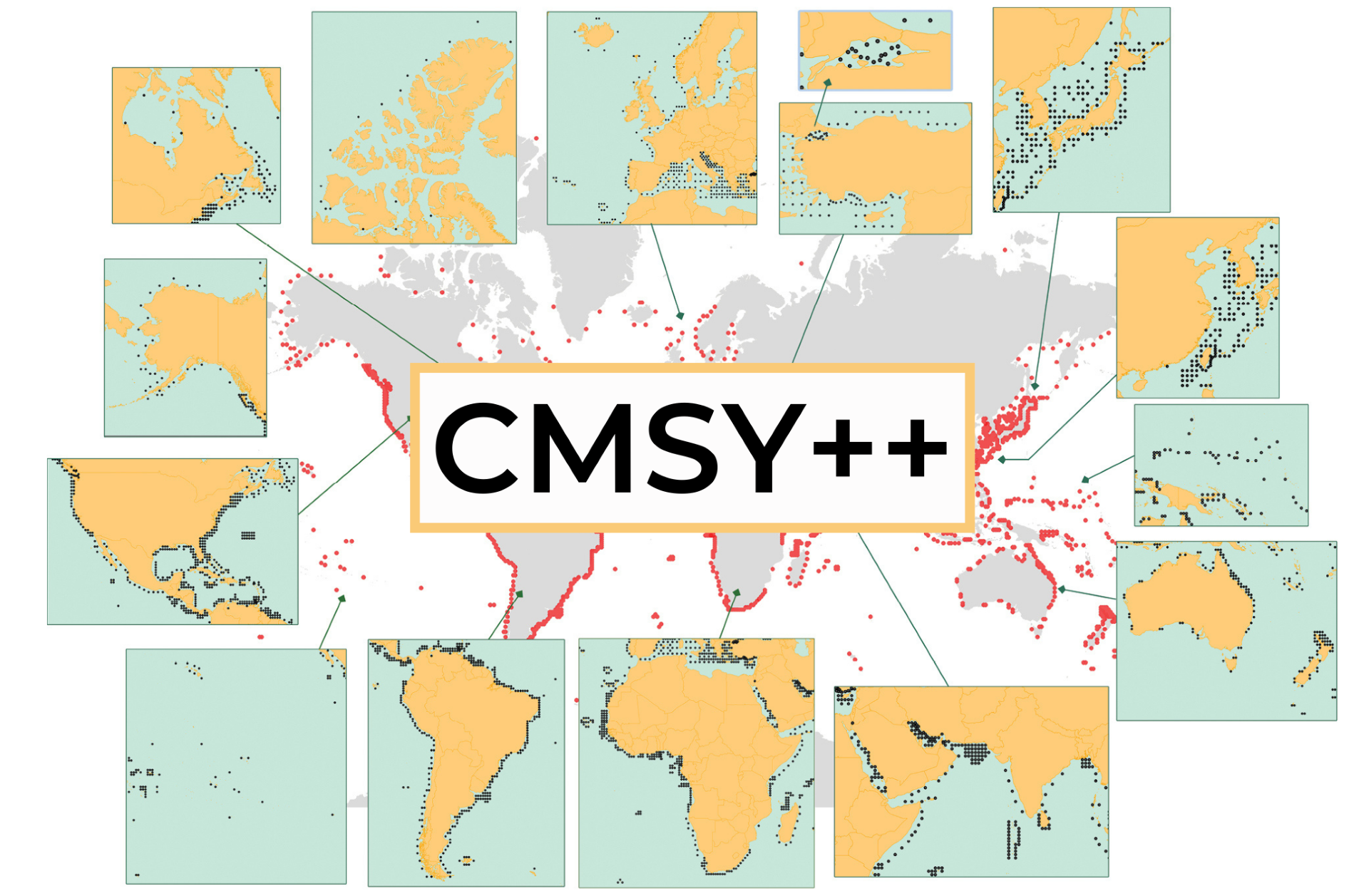
Maps showing the locations of the centroids of the over 2000 stock assessments performed with CMSY (~20%) and CMSY ++ (~80%) in all parts of the world. Image Credit: Froese et al.
The international team of researchers who developed the improved CMSY++ model observed in a study published in the journal Acta Ichthyologica et Piscatoria that its outcomes more closely match what is, in fact, the maximum catch that a fish stock can sustain over the long term, provided that environmental conditions do not change significantly.
CMSY++ now enables managers and scientists to enter only catch data to determine how many fish are left in a given stock and how much fishing pressure can be applied, thanks to an artificial neural network that has been trained with catch and biomass data from 400 stocks to recognize probable ranges of the initial and final state of the stocks being evaluated.
The term “maximum sustainable yield” (MSY) refers to a concept that was developed in the 1950s by US fisheries scientist M.B. Schaefer. Schaefer suggested that the highest possible catches could be sustained over time if fishermen left in the water biomass equal to at least 50% of the unexploited fish population or of the biomass it had before being commercially capitalized on.
By comparing the results of CMSY++ to models that are considered superior because they require large amounts of initial data inputs, such as the Fox surplus-production model and the Stock Synthesis (SS3) age-structured model, we noticed that these models badly overpredicted the catch that a population can support when previous overfishing has reduced it to a small fraction of its natural size, as is the case with most exploited fish populations in the world.
Dr. Rainer Froese, Lead Author and Senior Scientist, GEOMAR Helmholtz Centre for Ocean Research
In other words, the CMSY++ method’s underlying model fit the observed data, whereas the forecasts of the ‘gold standard’ models were overly optimistic in anticipating sustainable catches.
These models tend to estimate the biomass required to produce maximum sustainable yields as less than half of unexploited biomass, which is lower than M.B. Schaefer originally proposed based on the widely observed S-shaped growth curve of unexploited populations or population size that the ecosystem would normally accommodate. This finding could explain the often-observed failure of fisheries managers to maintain or rebuild depleted stocks even when the predictions of the gold standard models were followed.
Daniel Pauly, Study Co-Author and Principal Investigator, University of British Columbia
Journal Reference
Froese, R., et al. (2023) New developments in the analysis of catch time series as the basis for fish stock assessments: The CMSY++ method. Acta Ichthyologica et Piscatoria. doi:10.3897/aiep.53.105910